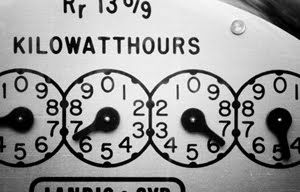Born from an urgent need for the UK economy to diversify its electricity generation away from the traditional hydrocarbon fuels such as oil, gas and coal, HM Government set the target of sourcing 20% of the grid supplied electricity by 2020 from renewable or so-called ‘Clean Technologies’ to focus national strategy. So, to meet its 20% renewable target, the Government believes 20GW (gigaWatts) of power will need to be sourced from alternative energy sources, FiTs are being introduce with the intention of incentivising the adoption of small scale low carbon electricity generation technologies.
These small scale low-carbon electricity technologies eligible for FiTs include:
- solar photovoltaics (PV)
- wind
- hydro
- anaerobic digestion
- domestic scale micro CHP (with a capacity of 2kW or less)
FiTs will support proven clean technologies, it is not intended to support the development of unproven ones.
The benefit of generating on site is significantly improved by FiTs which offer two pricing elements. One element of the tariff price covers the installed ‘Generation’ capacity and the second the ‘Export’ of electricity. Generation pays a fixed price for every unit of electricity produced on site, whereas Export is a bonus payment for every unit of electricity not used on site but fed into the national grid for transmission to another end user. The revenue and saving by the operating site comprises:
- Income for generating electricity on site
- Income for exporting residual power not used on site
- Savings in cost from the non import of grid electricity
Generation and Export tariffs will be index-linked to the retail price index to prevent inflation eroding the value of revenue from projects.After consultation with stakeholders the price floor for export electricity has been reduced to 3p/kWh [from the originally proposed 5p/kWh]. Producers, however, could opt out of this 'minimum level' and negotiate prices with energy suppliers on an annual basis.So What if You Are Interested in Generating Electricity?
Whatever your motivation to promote site based generation in your organisation the following steps are recommended:
- Have you got a carbon management strategy or are you just jumping on the band wagon?
- If you are starting from a low base in energy and carbon management discuss energy supply and carbon issues with your senior management. Assess their readiness, risk appetite and inclination to embrace the idea of energy generation. Do they know that you have exhausted energy efficiency gains to the maximum?
- There are a range of electricity generation technologies. Establish which option suits your organisation best and provides the most economically advantageous proposition over the life of that investment.
- Work with an experienced consultant who will assist you with establishing a commercial and technical strategy. Consider various procurement options and present a clear case to senior management for their consideration and, hopefully, approval.
The field of carbon management is full of new ideas and complexities, but one thing is clear, risk assessment and management will be an essential tool in ensuring that your organisation is benefiting from the position it ultimately chooses to adopt.



No comments:
Post a Comment